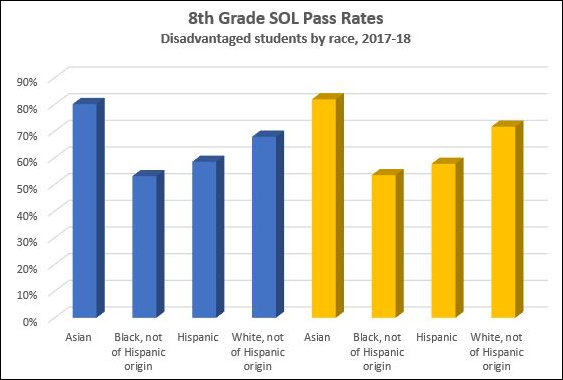Job openings outnumber job seekers by a record gap, the Wall Street Journal reports today. There were a seasonally adjusted 7.45 million unfilled jobs at the end of April compared to 6.2 million Americans looking for work. With workers so much in demand, there exists a never-seen-before-in-our-lifetimes opportunity to increase social mobility.
Here in Virginia, contend John Broderick, president of Old Dominion University, and co-author Ellen J. Neufeldt, the commonwealth can kill two birds with one stone: meeting the demand for tens of thousands of unfilled technology jobs and helping lower-income Virginians climb out of poverty and near-poverty by equipping the disadvantaged with the skills required for those jobs. In a Richmond Times-Dispatch op-ed published today they write:
It is our obligation, particularly at public universities,” “to enhance social mobility for the students we serve. By removing barriers to higher education and preparing students for STEM-H jobs, institutions will not only increase economic opportunity and social mobility, but also ensure that the jobs of the future are filled by a well-educated, career-ready and diverse workforce.
From a high-altitude perspective, Broderick and Neufeldt make an excellent point and their ideas are well worth exploring. However, their analysis fails to account for the bottleneck in the school-to-college pipeline for lower-income students, especially African-Americans and Hispanics, and a naive application of their ideas could have unintended negative consequences.
ODU’s Center for Social Mobility and the State Council for Higher Education in Virginia (SCHEV) recently held a symposium to address the social mobility issue. Experts warned that demographic trends — the growing percentage of the population in African-American and Hispanic households — pose a special challenge.
“As population growth among people of color continues to outpace that of white Americans and baby boomers exit the workforce, policy leaders must work to increase under-represented students with college degrees and close racial gaps,” write Broderick and Neufeldt. The trends “exacerbate the racial income gap, perpetuate the cycle of poverty, and leave well-paying jobs unfilled. Continuing on this path is untenable.”
Policy leaders must work to “increase under-represented students with college degrees and close racial gaps,” they write. And how might that be done? By increasing “financial resources” to support academic and support programs such as targeted success coaching, Brother2Brother-like tutoring, student work and internships, and pairing students with first-generation faculty mentors. Another component in the social mobility strategy “requires an emphasis on STEM-H (science, technology, engineering, math and health care) disciplines to produce graduates ready to fill jobs in the knowledge economy.”
These programs may be a good idea. But they can accomplish only so much. No amount of tutoring and mentoring will suffice to overcome a severely deficient K-12 education.
The school-to-college pipeline poses an intractable problem that colleges and universities cannot solve. The chart below, based on statewide 2017-18 Standards of Learning test data, shows that disadvantaged students — in particular African-American and Hispanic disadvantaged students — pass their 8th grade mathematics and science tests at distressingly low rates.

It will be difficult to increase the number of low-income African-American and Hispanic students in college- and university-level STEM programs when only 50% to 60% pass their 8th grade math and science requirements. Luring poorly prepared students into college, where they borrow immense sums to pay for their education and from which many drop out, does no favors to the drop-outs. Indeed, such a policy ruins lives and skewers any chance these unfortunates had at upward mobility.
At some point in our history, Americans will look back with shame upon the practice of telling everyone they need to attend college to have a shot at a better life, enrolling thousands who are academically ill prepared for college-level work, loading them up with debt that many will never repay, all the while building bastions of bloat and privilege for college administrators and tenured faculty.
So, yes, an unparalleled opportunity does exist in the current job climate to create upward social mobility for lower-income Americans. Yes, we as a society should work to eliminate barriers to upward mobility, and, yes, we should seriously consider the kinds of programs Broderick and Neufeldt describe (depending on who pays for them, a question the authors sidestep).
But we should encourage enrollment only of those students who have a realistic chance at succeeding, otherwise we will cripple another generation with debt that can never be repaid. We must acknowledge that it is not within the power of colleges and universities to address the failings of K-12 schools and the cultural pathologies of 21st-century American poverty. Every policy initiative should be judged on its ability to produce positive outcomes, not the good intentions of those who propose it.


Leave a Reply
You must be logged in to post a comment.